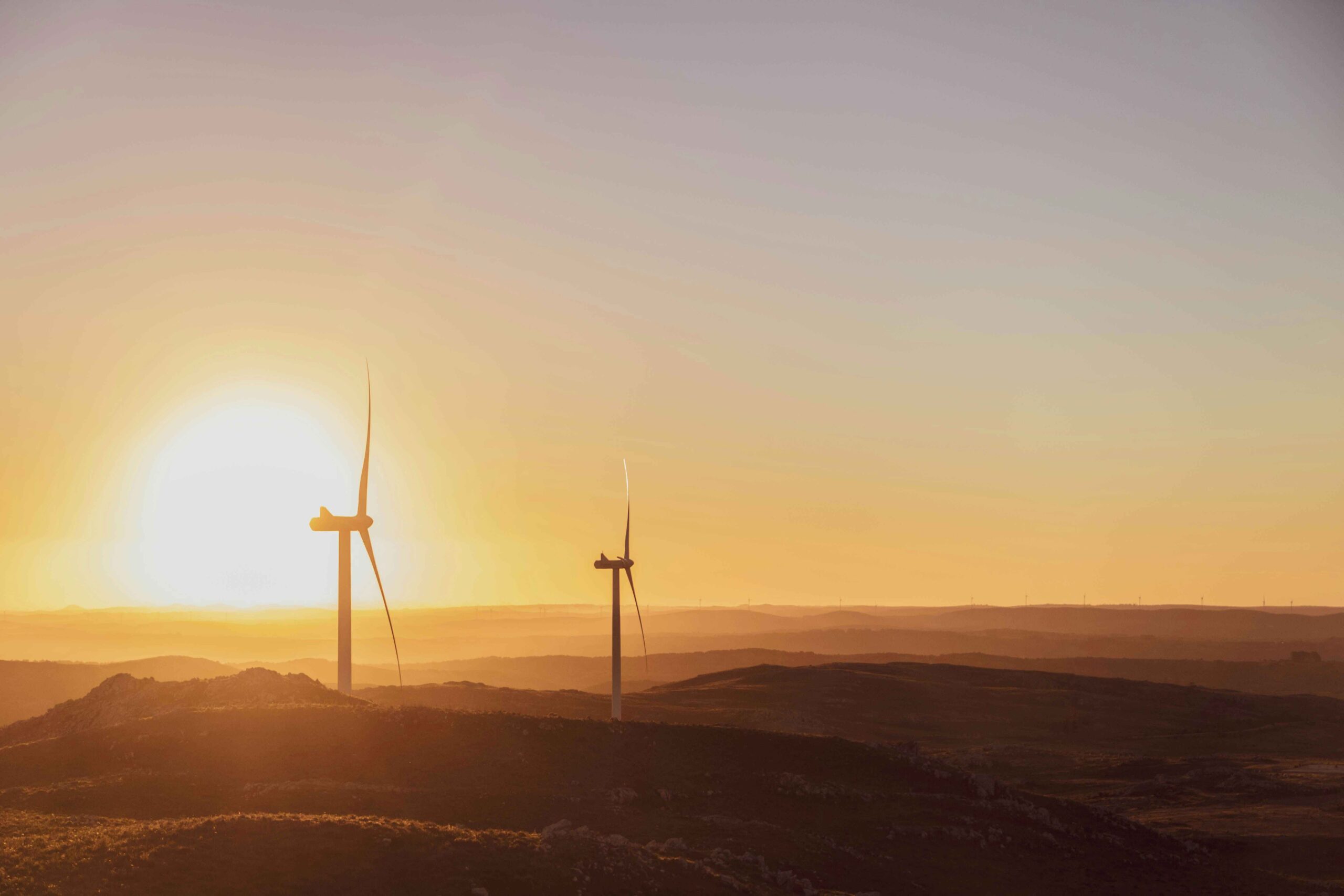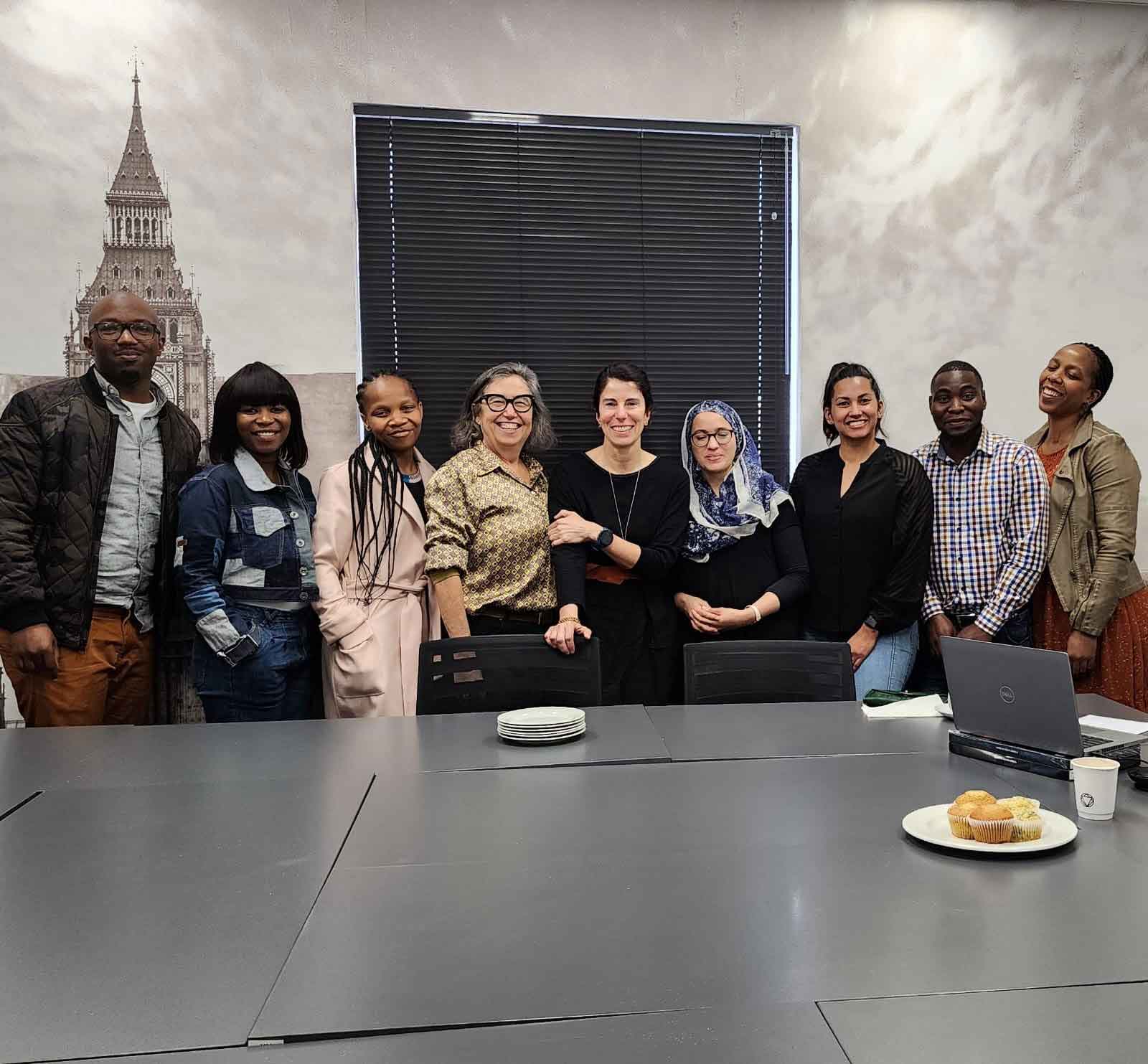South Africa and Uruguay have more than their location on the 34th parallel south in common. As developing economies of the Global South, they share many development challenges about which lessons can be drawn through research collaboration. Since 2017, the HSRC’s Centre for Science, Technology and Innovation Indicators has worked with Uruguayan innovation scholar Professor Isabel Bortagaray, whose comparative analysis concerns innovation policy’s role in addressing water and energy crises. As South Africa continues to grapple with persistent load shedding, what lessons can be drawn from Uruguay’s transition to renewable energy? By Katharine McKenzie

Wind turbines on a mountain Maldonado, Uruguay. Photo: Matias Contreras, Unsplash
Since Uruguay initiated a drastic shift in its energy strategy about two decades ago, it has become recognised globally as one of the leading users of renewable energy in the world. The country also shares many developmental problems with South Africa, including most recently a drought that has severely threatened water security.
Professor Isabel Bortagaray, a sociologist at the Universidad de la República de Uruguay, has worked with the HSRC Centre for Science, Technology and Innovation Indicators since 2017. As one of the centre’s international research fellows, she has been developing insights from comparative analyses of South African and Uruguayan innovation responses to water and energy security crises.
During a visit to South Africa in late 2022, Bortagaray presented at a seminar where she discussed the role of science, technology and innovation (STI) policy in the two countries with stakeholders in the national system of innovation, providing a compelling case study of Uruguay’s recent energy transition.
Uruguay’s state-led energy policy is one of the few national policies that “is really state led, not a government policy, but a state policy supported by the entire political system. That is not common in our country. So, it has been a radical transformation in terms of scale, scope and timespan,” said Bortagaray.
Factors that contributed to the policy change included “a very traumatic beginning of the 21st century, with a very deep economic crisis, following Argentina’s crisis. There was a realisation that we needed to increase energy security”, she said.
At the time, Uruguay’s energy supply was not meeting the needs of the country; the national electricity system was highly dependent on hydroelectric sources and fossil fuel inputs, and was disrupted by a severe drought and the high price of petrol. This resulted in a search for alternative energy strategies.
New strategies for energy alternatives
“The one that was looking the most likely was nuclear power, which we did not have. But that was very controversial,” said Bortagaray.
An expert commission was created to assess nuclear power for Uruguay.
“We had a citizen jury, led and fostered by the university to explore different perspectives. That jury concluded that the social costs to future generations going into nuclear would be very high.”
At the same time, a new political party came to power.
“With that, the environment, science, technology and innovation became part of the political narrative. Energy policy was conceived as a productive development policy” that should satisfy national energy needs affordably, contribute to competitiveness and promote healthier energy consumption habits.
It also aimed to achieve “national energy independence” in the context of Uruguay’s economic integration with neighbouring states.
“The scale of Uruguay’s energy transformation was dramatic. By 2019, 98% of the grid was based on renewable sources, while in 2005, only 37% of energy was generated by renewables,” reported Bortagaray. This enabled Uruguay to export energy based on the country’s new, robust energy mix.
A key factor in this decisive shift was the country’s “long-standing academic and research capabilities in wind energy”.
A second important factor, said Bortagaray, was “decisive political will – a crucial issue that really made a difference”.
The public electricity company that led the process also played an important role, together with a mix of funding instruments to enable the transition. This allowed the electricity company to assure the purchase of wind energy for 20-year contract periods, mitigating risk for new energy suppliers.
Today, most of Uruguay’s wind parks are privately owned and have long-term power purchase agreements with the national electricity utility.

HSRC international research fellow, Prof. Isabel Bortagaray, has worked with the Centre for Science, Technology and Innovation Indicators since 2017. Pictured here from left to right: Dr Yasser Buchana, Zinzi Hlakula, Setsoheng Mayeki, Dr Glenda Kruss, Prof. Isabel Bortagaray, Dr Il-haam Petersen, Nicole van Rheede, Dr Mbongeni Maziya and Bongiwe Ngqaqu. Photo: HSRC
STI policy and energy transitions
“Of course, I am simplifying the complexity that is behind this,” said Bortagaray, acknowledging too that Uruguay “missed having an explicit STI policy underlying this major transformation and development strategy, particularly having more endogenous development processes in place”.
On the relationship between STI policy and its practical implementation, Bortagaray called for deeper thinking about the linkages between governance, STI and other national policies.
“We need to reflect on the learnings from COVID-19 because we had very good management of the health crisis, based on a very strong connection between policy and research, and policy and the scientific community. But as soon as COVID-19 finished, that was dismantled. We in the Global South also need to strengthen our linkages and learning interactions.”
Opportunities for South Africa in a just energy transition
Bortagaray’s presentation at the seminar sparked much discussion in the context of South Africa’s current energy crisis. Nina Callahan, a researcher at the Centre for Sustainability Transitions at Stellenbosch University, as discussant, noted that South Africa was undergoing an energy transition, with the desire to ensure a “just” transition.
“To understand the role of policy in the transition, how to steer it, how we diagnose the problem and the ways that we respond to it,” was important for South Africa, said Callahan.
Callahan and other speakers suggested that South Africa could learn from the Uruguay case, including the “renewed social contracting” that underpinned Uruguay’s energy transition, the focus on energy sovereignty, the institutional innovation that paved the way for change, and the social coalition-building that served to identify common interests and negotiate trade-offs.
She noted that Uruguay had responded to its energy crisis “at the right time” even though this meant difficult negotiations within the society, while South Africa was “past the right time”, and now required urgent and robust responses to address the electricity crisis imposed on the society and the economy.
“We are also operating in the shadow of state capture,” said Callahan, “where there is low trust, and low capability within the state and central institutions in our country.”
This means extra vigilance in approaching innovative solutions to prevent corruption.
While South Africa’s energy transition is not proceeding in an orderly manner, Callahan concluded by focusing on the opportunities that it holds: “The idea of decarbonisation for development is very much about a reindustrialisation programme and harnessing the technologies available, not only in developing and manufacturing for renewable energy, but also in the technologies around green hydrogen, battery storage and electric vehicles. There are so many opportunities for us that this energy transition presents.”
Author: Katharine McKenzie is a writer in the HSRC’s Centre for Science, Technology and Innovation Indicators
Research contact: Gerard Ralphs, a programme manager, and Dr Il-haam Petersen, a chief research specialist at the HSRC’s Centre for Science, Technology and Innovation Indicators


